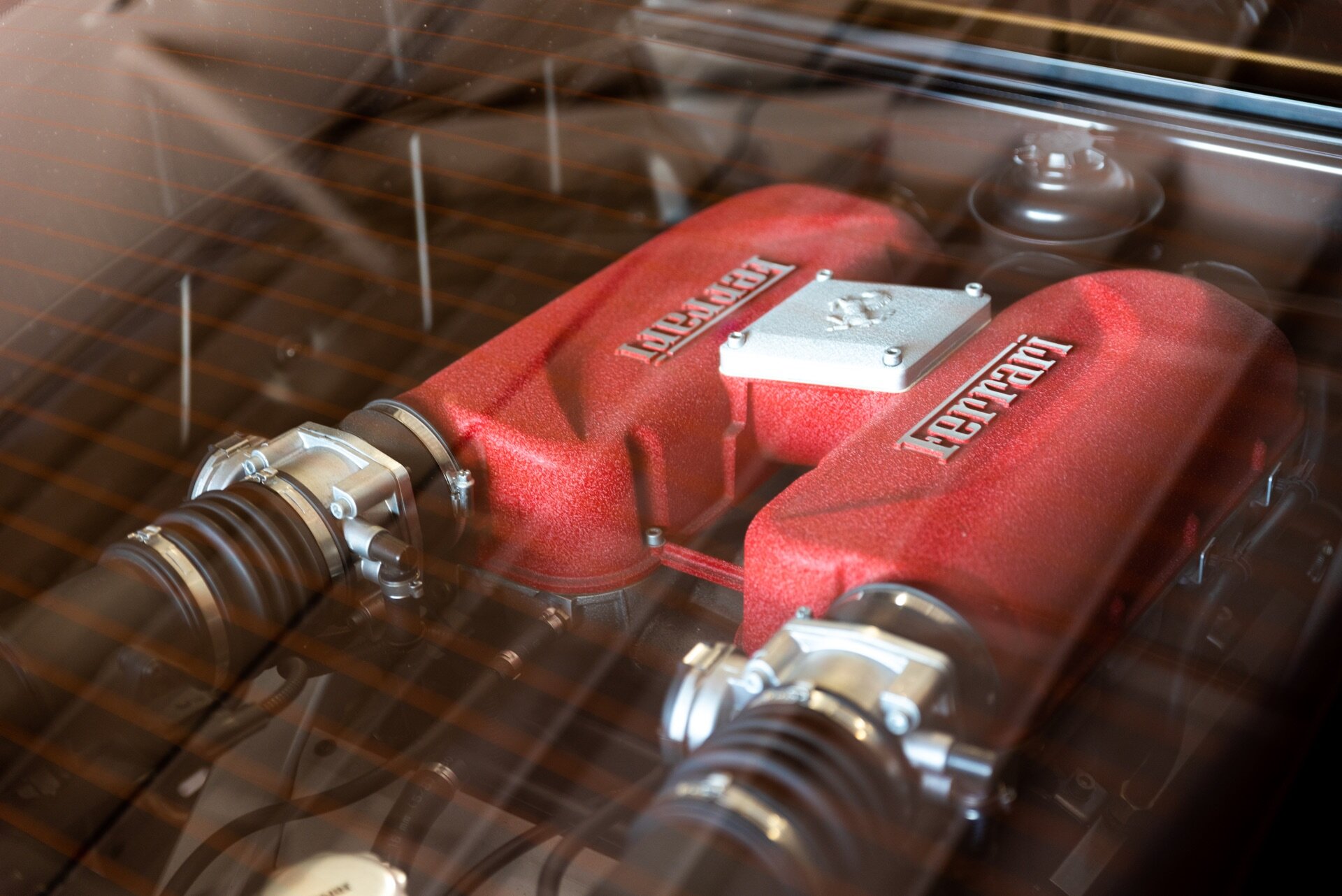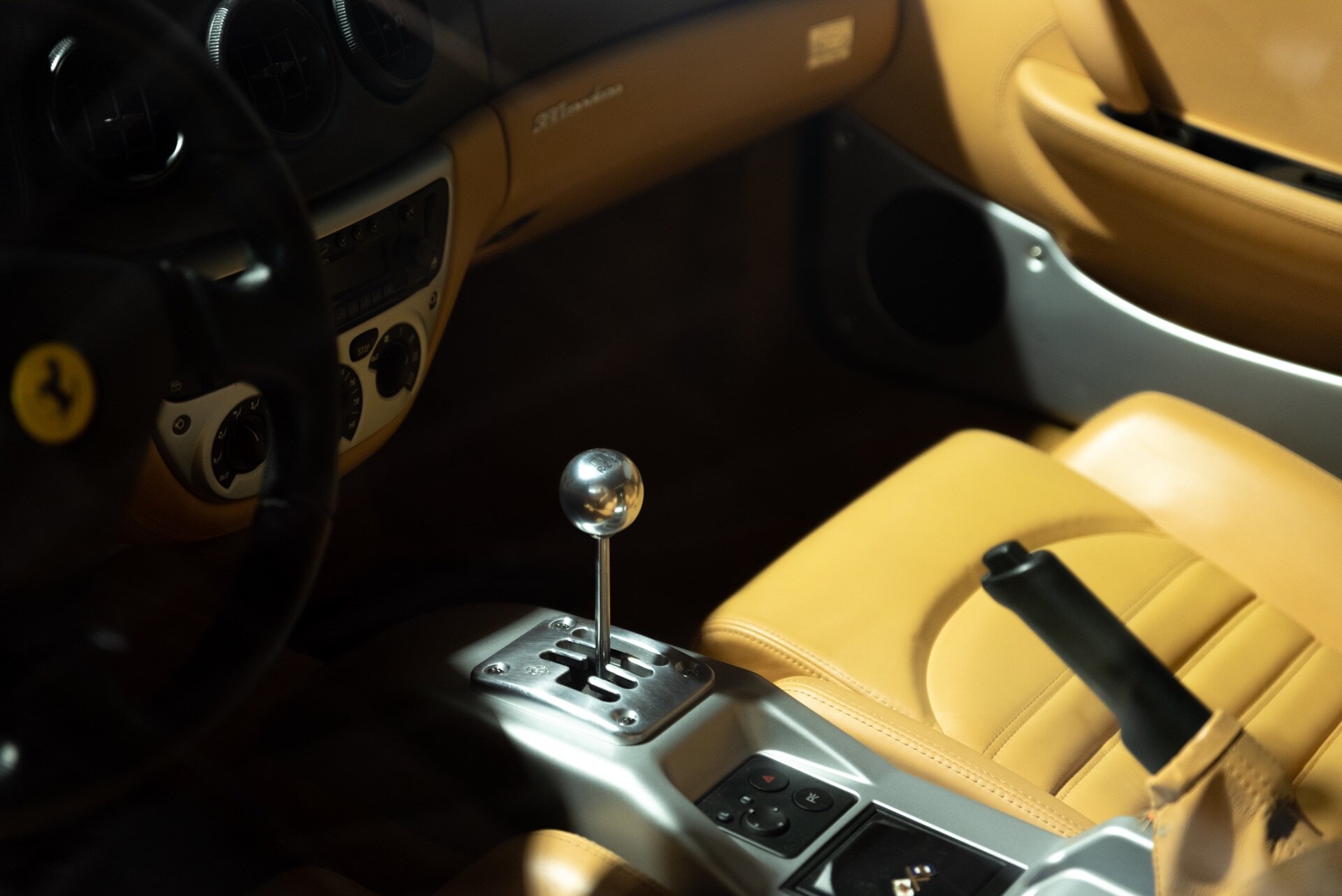Buyers Guide - Ferrari 360
As an exclusive manufacturer with very expensive cars, Ferrari has never been considered a true "everyday sports car." Race-like technology, screaming engines, and suspension better suited for the track than for the crowded streets were always too much for some owners. Of course, Ferraris are fantastic machines to drive, but sometimes they are too much for the average buyer who prefers to use something else during the week, concerned about the value and preservation of his prized possession. However, there is one modern Ferrari that you can enjoy daily without any second thoughts. It will provide you with all the performance you could use on the street, the fantastic soundtrack, and the dependability you want from your daily commute.
The Ferrari 360 is that car. Even though it was introduced in 1999, it is still a relevant, fast, and charmingly mechanical device that can provide you with everyday motoring thrills for an affordable price. The 360 is the successor of the gorgeous but very fragile F355, and the company knew that its replacement needed to be much more dependable. So, Ferrari concentrated on making 360 bigger, more comfortable, and durable along with more powerful and faster. The success of this model and its reputation amongst the Ferrari aficionados shows that those goals were achieved. In fact, thanks to enhanced usability, straightforward mechanics, and magic of depreciation, 360 is probably the perfect Ferrari if you are a keen enthusiast who wants to enjoy his car on a daily basis.
The Facts
The Ferrari 360 was introduced in 1999 and sold through 2004 before replaced by F430. It represented a slight departure from the design of the F355 with open headlights, more swooping lines, different silhouettes, and a more modern interior. If the F355's design had its roots in '80s Ferrari styling, the 360 was all '90s aesthetics. The 360 was also made out of aluminum with space frame chassis, which was significantly stronger although slightly longer and wider than the predecessors.
The engine was, as expected, behind the passengers, and it was a 3.6-liter V8 unit with the same bore as F355 but slightly longer stoke, five valves per cylinder, and nominal power output of 400 hp and 275 lb-ft of torque. With such firepower, 360 was able to accelerate from 0 to 60 mph in 4.1 to 4.7 seconds and top 183 mph with ease. Over five years of production, Ferrari made over 17,500 cars in three versions, and about ¼ of the production run were US-spec cars. The 360 was offered with a 6-speed manual and 6-speed F1-type automatic, which was first introduced in F355 but improved for the Ferrari 360 model.
Which One to Get?
The 360 was offered in three distinctive versions: 360 Modena (coupe), 360 Spider (convertible), and 360 Challenge Stradale (faster, lighter, and more extreme model). The Modena is most common, with 8,800 cars being made with a fixed roof, followed by beautiful Spider (7,565 copies) and Challenge Stradale being the rarest with 1,288 examples. To be honest, you cannot go wrong with any of those cars. However, they all have distinctive personalities, and you should choose according to that.
The standard Modena coupe is a well-rounded sports car that should be enjoyed in its purest form – with manual transmission. The Spider is more of a boulevard cruiser but as capable and fast as the coupe and can often be found equipped with automatic. The Challenge Stradale is an enthusiast's favorite and more a racing car than a street-legal machine. It is 110 kg (200 lbs.) lighter than the standard Modena, with 25 hp more, revised suspension, braking, and recalibrated F1-style gearbox. It is not that faster in numbers, but far more brutal and uncompromising in driving experience and feel.
Even though the manual transmission was available, the majority of the customers chose the F1 automatic, which changed the gears faster but lacked that pure mechanical feel of a precise manual gearbox. Only about 1200 cars were equipped with 6-speed, and we suggest you look for them even though they command a premium over the average price. Interestingly, Ferrari wanted for Challenge Stradale to be the ultimate 360 in terms of performance, so this model came with the paddle-shift automatic only.
What to Watch Out For?
Like with so many other Ferraris, when you are shopping for 360, you want a well-kept, accident-free car with complete service history. Yes, there are some "anonymous" cars with very tempting prices out there, but cheap Ferrari is always a trap, and you will pay a lot more to get it sorted then you would if you have bought the good one in the first place. Stay away from salvage title cars and "restored" examples (the 360 is not old enough to be restored, and "restored" in this case means "back from the dead"). It is also important to mention that high-mileage cars are not a bad idea since the 360's V8 engine can withstand regular use. If the vehicle is adequately maintained and has all the service records, the above the average miles should not scare you.
The first thing you should check when inspecting a Ferrari 360 is the coolant tank, and make sure that the car is not driven just before since you want the coolant to be cold. When you remove the coolant tank's cap, which is positioned next to the rear panel in the engine compartment, look for oily residue or dirt. The coolant must be clean. However, if you find out that the antifreeze is greasy, dirty, and full of carbon debris – walk away and look for another car. This means that the engine is shot, and you are looking at complete rebuilt, which is, as you can expect, very expensive.
If the car passed the coolant test, move to the bodywork and inspect paint, panel gap, and condition. Since the 360 is made of aluminum, rust is not an issue, thankfully, but the paint chips, discoloration, and poor accident repair could be a problem. The interior should be next and what you want to see is a clean and tidy dashboard with no sign of water damage (Spiders are known for their leaky roofs) with all switches and electronics in full working order. If you notice that leather stitching on the top of the dashboard is not perfectly straight, don't worry. It was known that over time, leather shrinks a bit and makes stitching look crocked. Only cars kept in climate-controlled garages that saw minimal use are without it.
Mechanically, the F360 is pretty sound except for a few things like front ball joints, which get worn out much sooner than on comparable models. Although they are not terribly expensive to replace, you want to be sure that the car you are considering buying has a fresh one installed. However, if you think of buying an F1 automatic-equipped vehicle, we suggest you take it for a drive and carefully listen for any grids, scratches, and strange sounds coming from the back. The gearshifts must be precise and crisp, and if the car lingers to shift, this means that the clutch or gearbox pump is on its way out. Of course, taking your 360 to the official Ferrari specialist for a new transmission pump will be expensive, but there is a way how you can repair this for less money. The Ferrari used a very similar F1 automatic transmission pump as the Alfa Romeo (Selespeed gearbox), which can be fitted with minimal modifications. However, back in the early 2000s, when Ferrari 360 was on sale, Alfa Romeo was absent from the US market, which means that you don't have access to this part through an official dealer. But with the magic of online shopping, you can get an Alfa transmission pump in America in a matter of days or weeks and fit it in your 360, saving a few bucks.
The Prices
At this moment, 360 is one of the cheapest modern Ferraris you can buy. This means that prices for decent, well-kept, and fully functioning examples start at around $85,000 for standard 360 Modena with F1 paddle shift and go up. Spiders are a bit more, and Challenge Stradale sits on the top of the 360 food chain with prices starting at around $200,000. Desirable options are manual gearbox, bespoke luggage set, and sunroof, even though very few people order their cars. The cars which are offered with the original toolbox (every new 360 was sold with it), original wheels, and car cover are worth a little bit more than the models without these features.
Although this is not the cheapest Ferrari you can get and $100,000 is still a substantial sum of money, the 360 represents the best balance between classic Ferrari magic, exhilarating driving dynamics, glorious soundtrack, and modern technology. Still very fast and exciting, it offers its owners a unique blend of usability and dependability, which is very rare in the Ferrari world.







